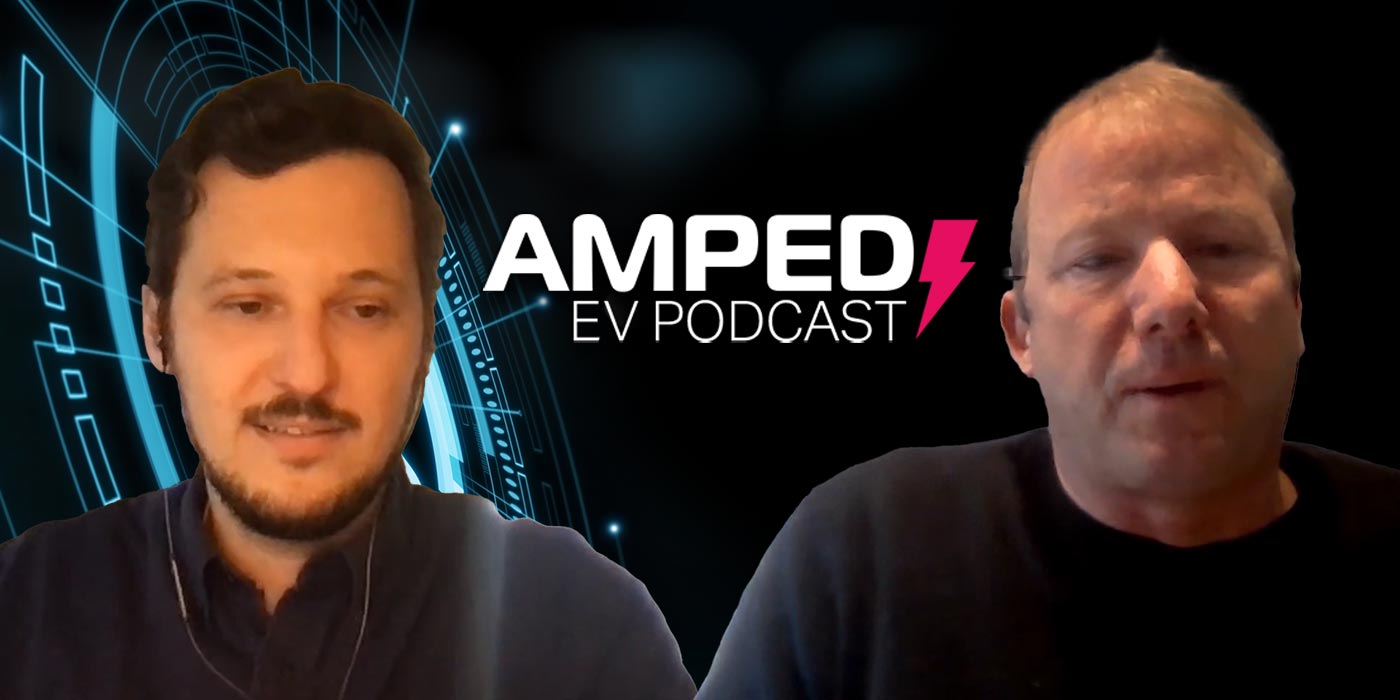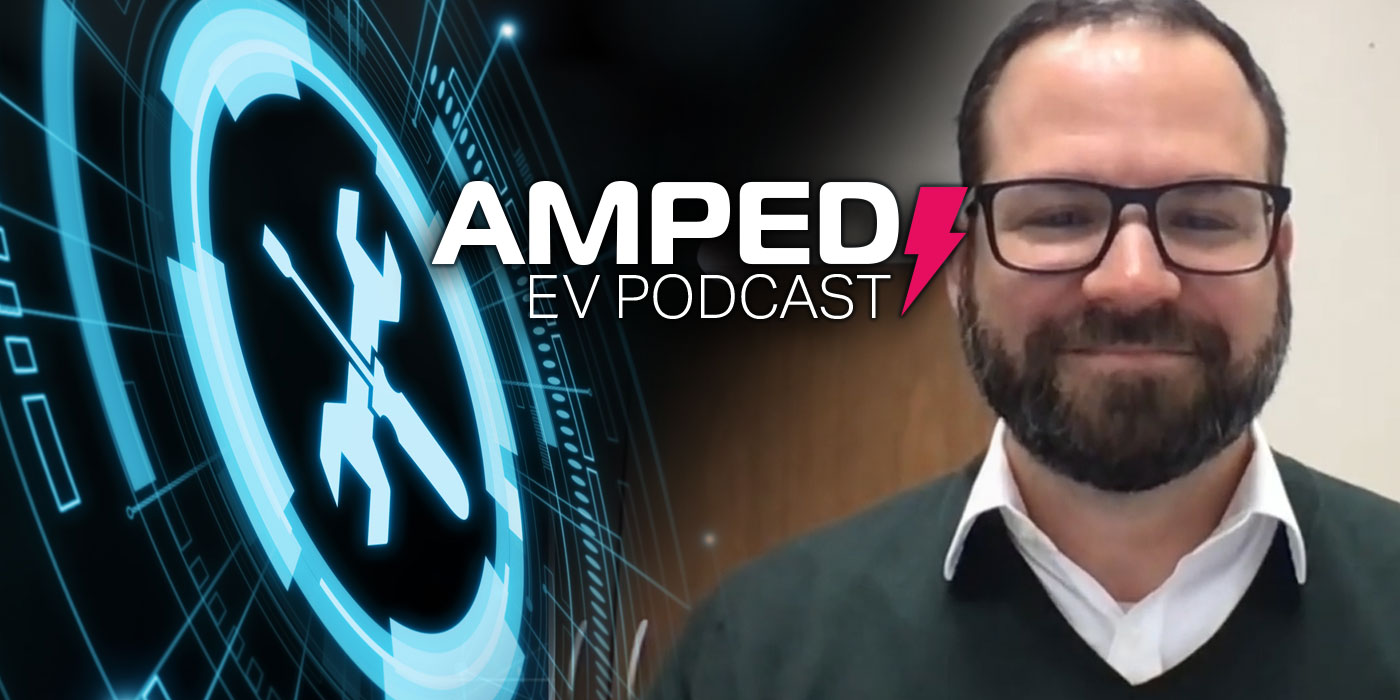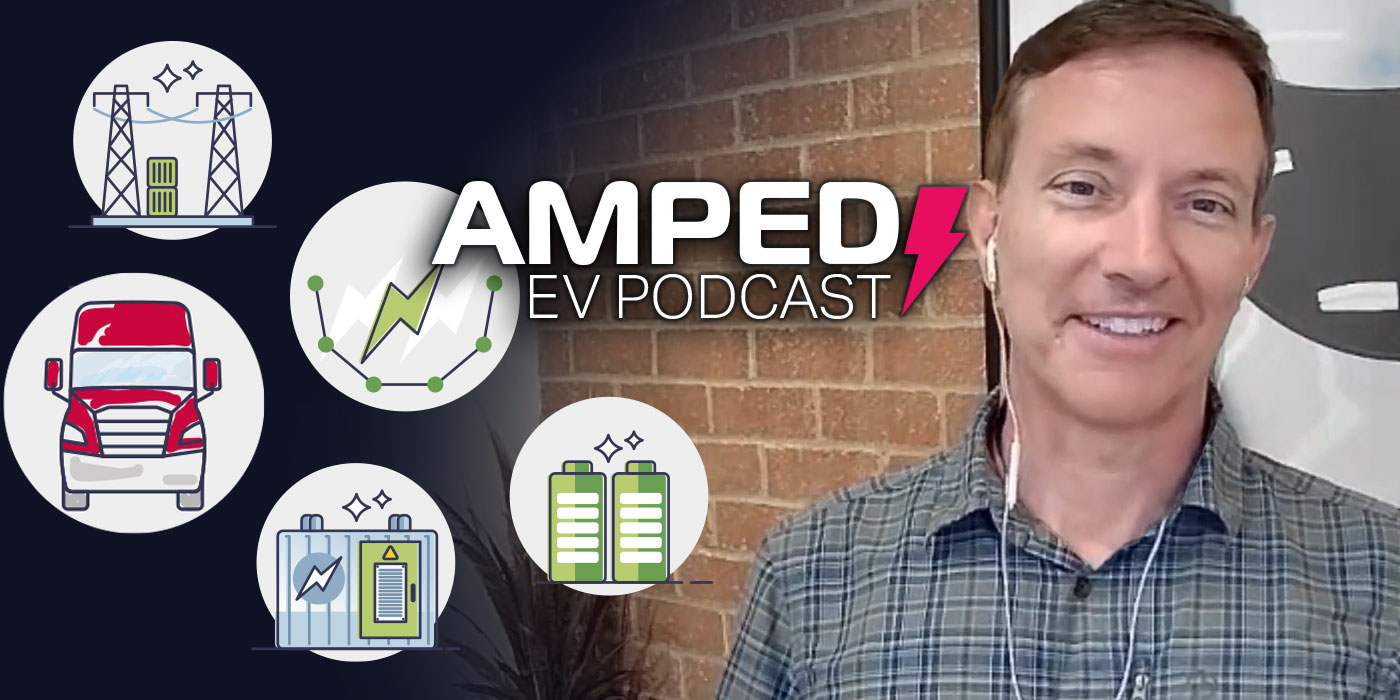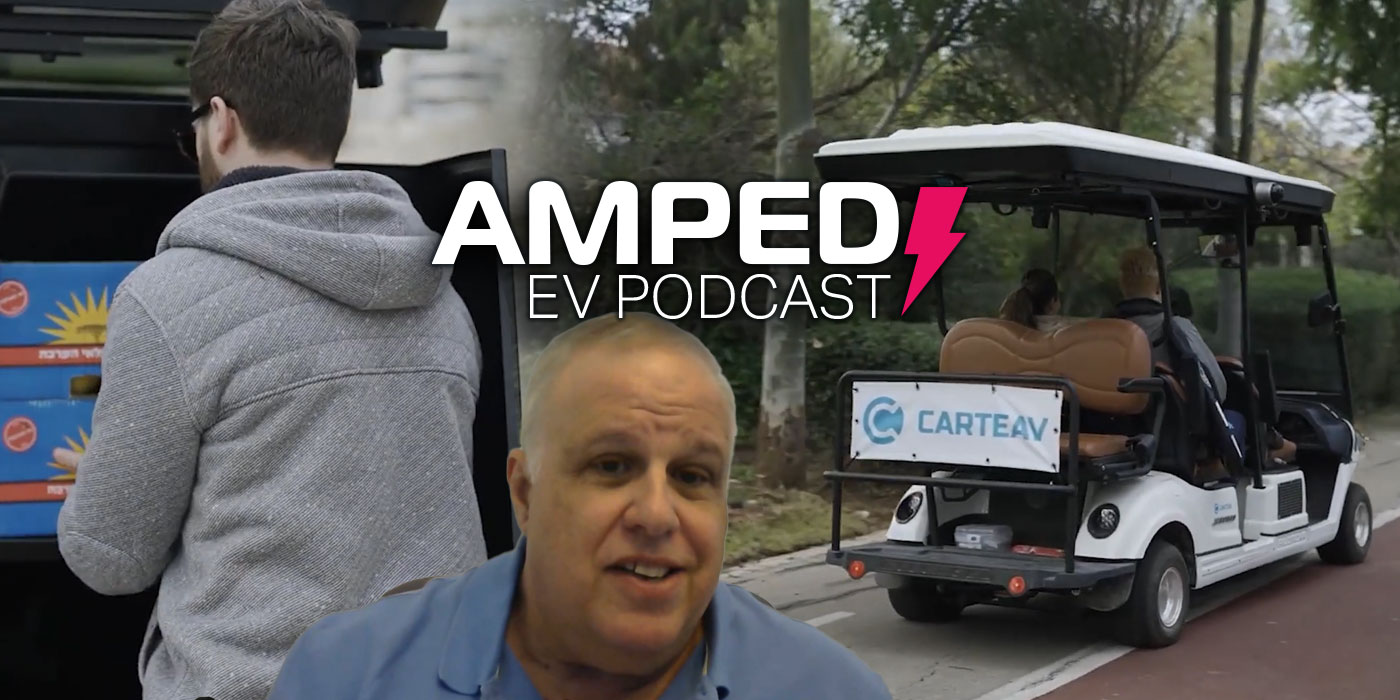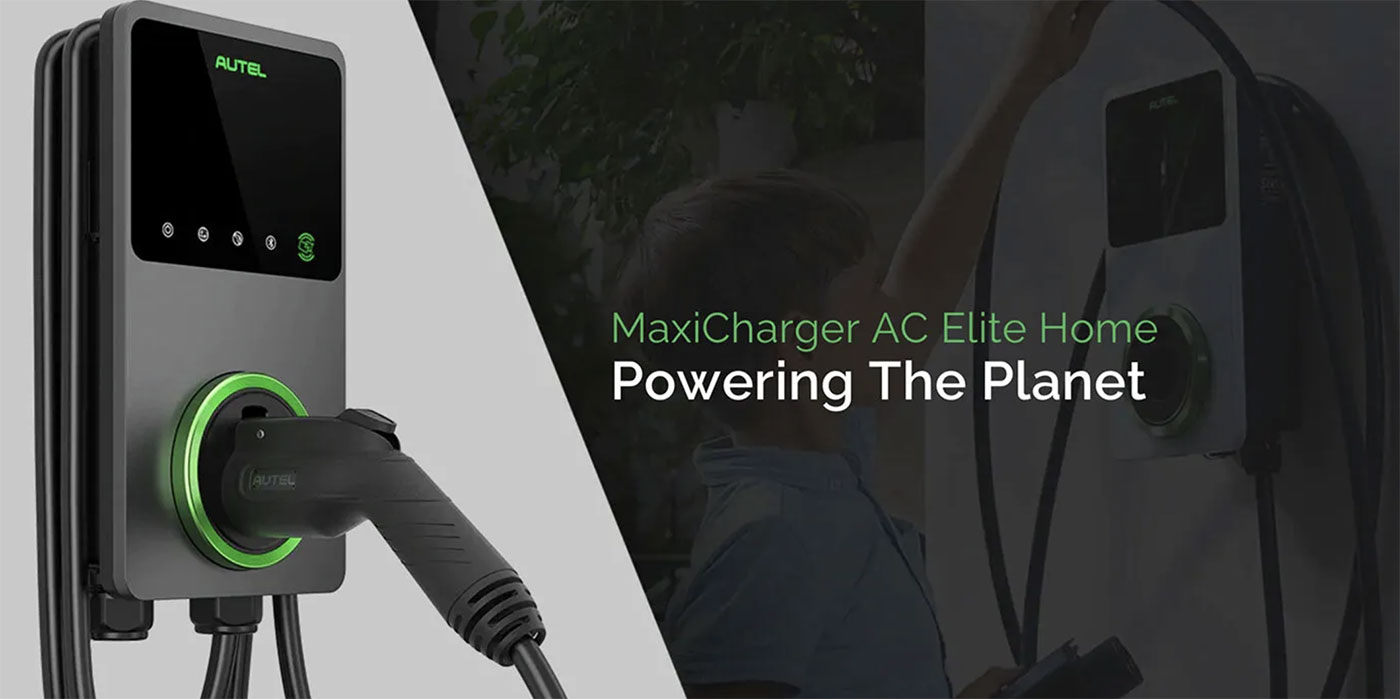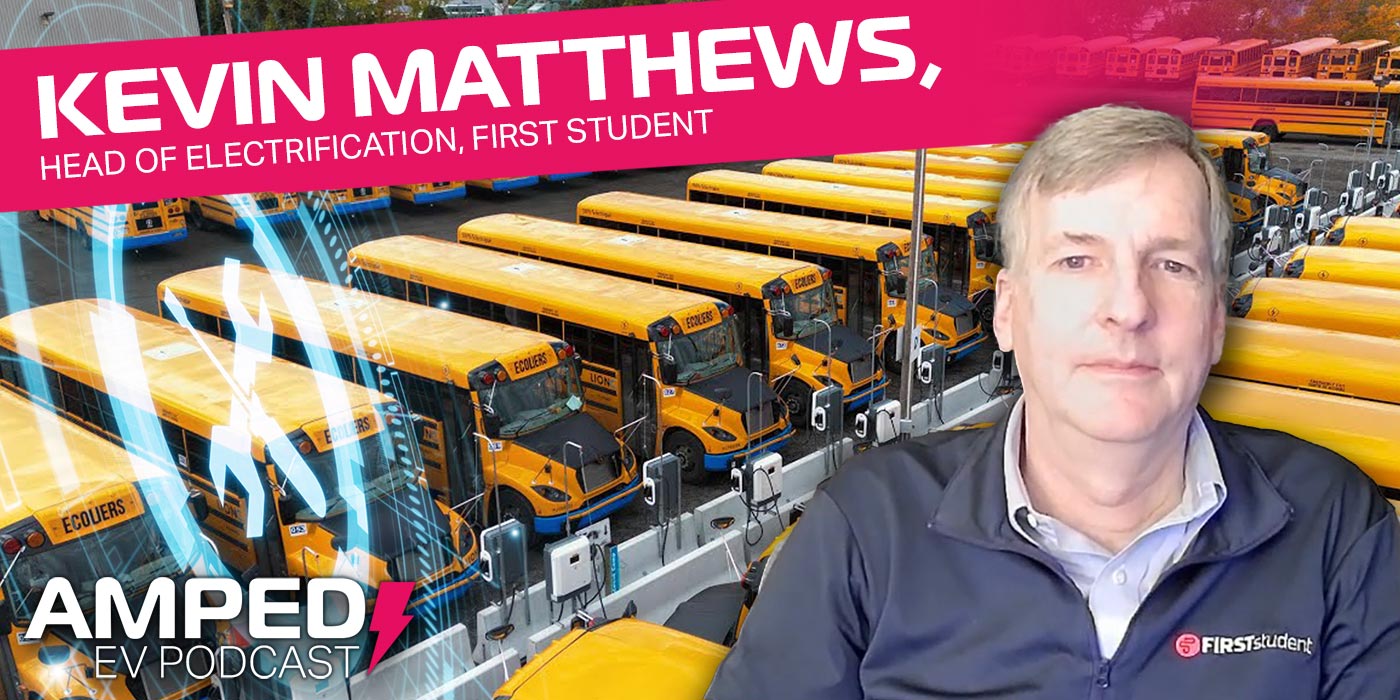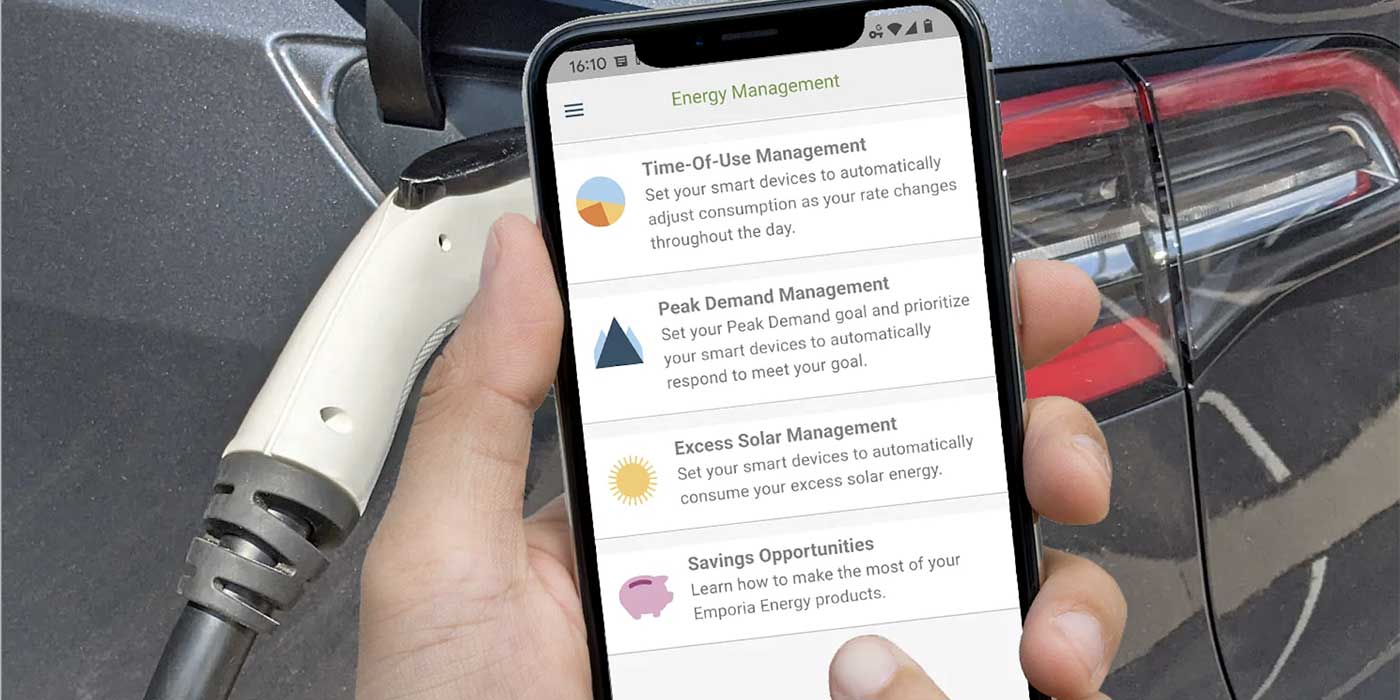For electric vehicles to ultimately work – I mean really work, at scale – it’s going to take so much more than a fancy-looking new car or truck with a fancy new integrated electric powertrain parked in every driveway across the nation.
There’s an underground component to this whole thing too, both metaphorically and literally. It takes groups of dedicated men and women willing to the often-thankless work involved with installing EV infrastructure, and that ecosystem is larger than simply erecting charging beacons as far as the eye can see. Trenches need to be dug, and, ideally, fiber needs to be run. There’s a whole approval process that needs to be taken care of. Permits need to be pulled, and someone probably needs to install a new transformer.
[Excuse me a moment, the room is spinning.]
Whew! OK.
Thankfully, there are businesses out there that are designed to help with all of this. MD7, a telecoms tower and data center consultancy company, is one of those. On today’s episode of The Amped EV Podcast, we invite Lew Cox, MD7’s director of business development to dig into the EV infrastructure details. He explains the connection between EV charging and fiber deployment, the EV charger installation approval process and why the federal government’s funding allocated to EV charging installation projects might not be enough.
Want more Amped EV podcast? Click here.
Here’s a transcript of the show:
David Sickels: Hi, and welcome back to The Amped EV Podcast. My name is David Sickels, I am the editor for The Buzz.
Jason Morgan: And I am Jason Morgan, content director for Fleet Equipment.
David Sickels: Jason, this is an interesting interview we’ve got here today.
Jason Morgan: Okay, tell me more.
David Sickels: I shall. So we talk about infrastructure all the time, And about how we need more of it. And how EV chargers equals infrastructure essentially. At least, that’s what I think.
Jason Morgan: That sounds like an apt equation for two editors to put together.
David Sickels: Right, exactly. However, I think we’re about to learn a lot because apparently, that’s not it. I mean that’s part of the equation.
Jason Morgan: We’re missing a variable.
David Sickels: So in order to explain a few things to us, I invited Lew Cox, he’s the Director of Business Development at MD7 which is a telecoms tower and data center consultancy company, onto the show to explain what goes into the infrastructure before you can put in the EV charging infrastructure. They help people with their installation needs.
David Sickels: Lew, thank you very much for joining us. I’m really excited for this. So can you give us a little bit of background into MD7 and also your background into how you’re helping people install charging infrastructure?
Lew Cox: Absolutely, David. I very much appreciate you guys taking the time to talk to me today. My name, as I mentioned, is Lew Cox. I’m the director of business development for MD7. MD7 is a digital infrastructure consultancy and we specialize in the deployment of really any infrastructure that helps keep people connected. Our specialty over the last couple of decades has been telecom and more recently we’ve transitioned into electric vehicle infrastructure and electric vehicle supply equipment. Through some really nice partnerships, we’ve got with lots of companies as well as the network operators. We’ve been able to apply the terminologies and the strategies that we’ve used from telecom into EV charging infrastructure because we feel that if you’re going to go ahead and roll out something as massive as this, right, half a million charging stations publicly, you have to do that methodically and intelligently and make sure that you’ve got the fail safes in place to prevent some of the headaches that we discovered in telecom decades ago during a very similar land grab or build out if you will.
Lew Cox: I’ve been working for MD7 for the better part of eight or nine years now, I think I started in 2014 so it’d be about eight years. And I’ve done just about everything at this company from initial real estate negotiation to project management, to small cell and telecom discussions with property owners. So it was only natural for me to transition into EV infrastructure and talk to a lot of those very same commercial and retail landlords about how to electrify their parking lot in a meaningful and thoughtful way.
David Sickels: So can you tell us a little bit about marrying that telecom and that EV infrastructure world, especially in terms of fiber? Specifically, what advantages does the fiber installation offer to EV charging?
Lew Cox: Sure. So when you talk about why you would look at fiber and EV charging infrastructure in the same vein, it’s because both are going to require a significant amount of either trenching or boring or some construction that would tear up the ground to lay this underlying infrastructure and conduit for the electric charging stations… Electric vehicle charging stations, excuse me. You need to do the exact same thing for fiber. And it doesn’t make a ton of sense to tear up the ground twice if you know that you’re going to put fiber to these stations or put it to the actual building where the parking lot sits. If you’re going to go through the effort of tearing up the concrete, you might as well future proof, if you will, that infrastructure because there will be a need for it in the nearby future.
Lew Cox: I think that a lot of the advantages that come with putting fiber in at charging stations include connectivity for the people that are actually charging, vehicle-to-grid technology to be able to talk to the various utility companies and find out where there might be a peak load event, as well as charger status as you’re navigating somewhere, if you’re on a road trip, you would like to know how many of these things are occupied or not. Connectivity is really the crux of all of that problem. And making sure that these chargers are developed in a way that allows for future uses of those cases is in my opinion the most effective way to build out this network.
Jason Morgan: Very cool. Lew, we’ve been talking to a lot of commercial fleets that are installing infrastructure. This is the first time I’m hearing about really a need for the fiber upgrade to, or at least to your point, while you’re digging up the ground, you might as well put the lines in. What is the ROI on this thing either for maybe a commercial fleet, municipality, even a consumer, right? If I’m putting in infrastructure at my house, I want to be able to reap the benefits too. Can you go a little deeper into some of the connectivity or availability of charging benefits and why is it worth the squeeze here?
Lew Cox: Absolutely. I can use a use case specifically for a commercial property owner. If you have a retail center and lots of shopping centers inside your property lines, if you’re going to go ahead and go through the effort of try and put chargers in place for your customers or for the customers of the people who are your clients, you want to make sure that these are things that are actually going to use. So that doesn’t mean putting chargers in the back of a parking lot or inside of a garage where they don’t even get any cell signal, especially if they’re going to be DC fast chargers and historically people hang out with their cars during a fast charging session, you don’t want them to sit there and be disconnected from the world or be forced to step out of their car into the weather. Maybe it’s really hot, maybe it’s raining.
Lew Cox: Most people when charging in a DC fast charger want to be able to browse the internet, watch a YouTube video, listen to this podcast perhaps, and giving them the network connectivity to be able to do that I feel is an added value on that ROI we talked about a little earlier, not only for the property owner, but for the end consumer and that makes it more likely for them to use the infrastructure. And people who will use the infrastructure will think more highly of the restaurants and the retail centers that provide it to them. And they’re more likely to come inside or spend more time on the property, usually spending their dollars.
David Sickels: So do you think that now is probably the best time to be doing that if you are going down that road of installing these EV chargers? Or do you think there’s any merit in waiting a few years seeing where the technology goes?
Lew Cox: I think that you definitely have the option of waiting because EV adoption isn’t quite at the point where it’s one in three consumers owns an EV and needs charging, destination charging as we call it at your retail center. But I think that if you are one of the properties that is thinking ahead and wants to really usher in this new area of EV adoption and make sure that those customers feel comfortable on your properties, this is one very easy solution to make sure that your chargers get used which drives revenue for you, the property owner, it drives revenue for the network operators that helped partner with you to put these chargers in and it drives additional revenue to the people in the retail centers who are trying to serve these customers while they come to your facilities to use it for whatever reasons, movie theaters, restaurants, shopping.
Lew Cox: All of these things are benefited by ensuring that the people that come to your property stay there because the chargers not only work, but they’re available and they have connectivity in the process and it gives them more information to be an informed consumer as they go about their day to day and where they choose to do business.
Jason Morgan: Right, for sure. I mean in our world, we do deal with a lot of automotive repair too. And as automotive repair gets… More electric vehicles start showing up the question of, “Okay, if I’m a repair shop owner, how do I invest in infrastructure? Do I make it publicly available? Do I not?” And all those questions. So I want to go back to something you said earlier that caught my interest. You mentioned fail safes and telecom headaches that you learned back in those days and bringing that into the EV infrastructure space and the fiber space. Can you tell us a little bit about what some of those challenges are and maybe give us a little insight into what are some of the stumbling blocks in that EV and fiber infrastructure process? And how do you help people avoid this?
Lew Cox: Absolutely. I think one of the things that the wireless industry was affected by back in the nineties, or late eighties, early nineties, was this land grab that we’re seeing almost play out play by play in EV right now, where everybody realized that cellular phones were the future. And it was a matter of putting as many sites as humanly possible in as many places and not so much thoughtful design went into what that looks like or how you maintain those assets in the future. So when you’re putting them on top of a mountain or on the 57th floor of a building and you’re thinking, “Oh, this is great, it will reach just about everybody,” then ended up biting them in the rear a little bit later on because too much connectivity was the issue and there wasn’t enough bandwidth to get all of the people that were under that umbrella, if you will, of a cell site to push their data through the pipeline.
Lew Cox: So when you have sites that are maybe not as viable is a term we use in the industry, because they don’t have the right level of fiber connectivity, nobody thought into the future about how much they would really need to put through this. So when you’re in the middle of nowhere and you’ve got an 80 foot tower, that tower is not as effective as maybe a 240 foot guide tower might be connected to a fiber network that provides more coverage on a single tower. And now, you’d have to put two or three more 80 foot towers to try and get the similar level of coverage and you’ve spent two or three times the money to do that. What we’re proposing at MD7 and what is the core of our services is to think ahead, right? And think about how do we keep people connected in these parking spaces?
Lew Cox: How do we turn a non-revenue generating asset like a parking space into something that not only generates revenue, but is future proofed, if you will, and set up for the future to be successful for the partner that we have installed this for or the network operator that is building out their deployment as it is?
David Sickels: That’s very, very interesting. Can you give us some insight as far as what the approval process is for trying to install some of these EV chargers on site?
Lew Cox: Absolutely. It does vary based on who you are as an entity, right? But I would say the typical strategy is first if we’re operating for a network operator, say Avolta, or Tesla, or EVgo, or whoever, they first need site partner approval which starts with an initial site walk, we would determine whether or not it’s viable to put a charging station here. How many stalls? Where’s power coming from? Et cetera. Then we have to turn that design into the site partner. The site partner who is the property owner who probably isn’t an EV expert is going to decide whether or not they like the aesthetics or whether or not it has a large impact on their day-to-day business, or it reaches a blackout period if you’re a retail center or something like that during construction. Those approvals are the first step before you can really get into some of the jurisdictional and funding utility approvals. Immediately after that, you’ve got to go for permits. And some cases you need zoning if you’ve got advertisements or something on your charger.
Lew Cox: Then you need to go and find funding to get this project actually built if it’s not being provided by the site partner themselves, which in most cases for a network operator usually isn’t. And then you’ve got to coordinate with the various utility companies which have outrageous lead times on transformers these days. For a DCFC station, most of the time, the property you’re deploying at won’t have the proper ramp bridge or power to provide that charging station with the full capacity that it would need. So you would need to do what’s called a utility application and ask for a new transformer from, say, SDG&E here in San Diego. And the process of that usually can take anywhere from nine to 18 months just to get a new transformer out there from the utility and it’s a very expensive process. It’s a $50,000 transformer. So it’s possible you go through all of the approvals, you get to the end and then you go to apply for a new transformer and you’re waiting almost two years to get your site turned on that you built a year ago.
David Sickels: Yeah, that’s incredible. I know from the fleet perspective, we’re always hearing that you need to be starting this process a year and a half, two years ahead at the minimum just to be sure that you’re going to be where you need to be and have everything in tune there. So you’ve said that although the federal government is giving out a lot of money for all this nationwide rollout of EV chargers, that federal funding might not be enough. Can you explain what you mean by that?
Lew Cox: Sure. So in my opinion, I think that we have a great goal as a country to put 500,000 public chargers in the U.S. And they provided what is no small amount of money, it’s $7.5 billion when you include the funding for disadvantaged communities into the total number. With the rising costs of transformers, with labor, with general electrical expertise which is at a shortage right now for really any company in this space, it’s very difficult to make that 7.5 billion add up to 500,000 public charging stations, right? And when you talk about a typical build for a DCFC station, it is not uncommon for it to get above 150, 200, $250,000 for an installation of half a dozen chargers. So if we’re spending $250,000 on one site, we’re going to run out of money before we get to 7.5 billion to put 499,000 more in the ground.
Lew Cox: So I think the solution to that, right, that gap has got to be bridged by private companies, right? It’s got to be bridged by the private sector who are going to shoulder the load and make it their mission to deploy this infrastructure more effectively, more efficiently and use that money wisely in addition to finding a way to monetize the model to make it make sense financially to provide charging to people publicly.
David Sickels: Excellent. Well Lew, I really appreciate you helping us understand what it actually takes here to get these EV chargers installed and what infrastructure you need before you can begin installing the infrastructure. So thank you. Thank you very much.
Lew Cox: Absolutely. Thanks for having me.
Jason Morgan: So yeah, at least just coming fresh off and one of the things he said that stuck with me that I think is interesting for Fleet is turning a parking space into a revenue generator.
David Sickels:
I underlined that.
Jason Morgan: I love it. And you know what? And that’s interesting. So you think about it in fleet applications, we’re running a lot of regional, maybe a lot of hubs. And I’m going to put infrastructure into my place, maybe my competitor will also need infrastructure. Do I open up any chargers for public use that maybe my competitor rolls in and then pays me to charge their truck to make their… I don’t know. I don’t know. Maybe there’s something there. Maybe there’s something there.
David Sickels: I’m sure you’re not the first one to have thought of that.
Jason Morgan: Well that disappoints me, but I understand.
David Sickels: I don’t mean it in that way, but I do mean it’s a really good idea.
Jason Morgan: Yeah, popped my balloon right there. But no. Yeah. I mean it’s something to think about.
David Sickels: Yeah, most definitely. I mean him talking about the land grab idea.
Jason Morgan: That was cool.
David Sickels: That says a lot to me about… Him saying that tells me that this EV thing that’s happening is probably not just a passing fad. I mean not that I really thought that to begin with, but really, what I’m trying to say is that this land grab mentality is obviously happening right now.
Jason Morgan: Right.
David Sickels: And having somebody on the other end who can help you thoughtfully do this and not have it be in the way when cell phones started to really start popping up with everybody, that is going to be needed, or this whole EV charging rollout is going to take a lot longer, we’re going to have a lot more headaches.
Jason Morgan: And this is just me spitballing, maybe it also continues, right? I mean sure, I loved his analogy to the wireless cell tower explosion.
David Sickels: Yes.
Jason Morgan: But then we saw 4G roll out and we saw 5G roll out. How many commercials did you see about their rolling out stuff? Or wireless takes a lot of cable, wireless isn’t wireless. Are we in for something with the same thing with EV charging? We’ve talked about expandability. We’ve talked about increasing the footprint there, availability. So I mean this is probably not a set it, forget it kind of thing, right? It’s going to be an evolving situation as we move forward.
David Sickels: Yeah, absolutely. You talk about these consumer chargers where consumers are going to want to be surfing the web or watching Netflix while they’re charging up. Or maybe that charger has a big old screen on it that’s serving you advertisements. I mean these things are going to need this new style of infrastructure to be able to handle all of that plus the charging needs of your vehicle.
Jason Morgan: For sure. For sure. Man, you get a sponsor and already you’re serving ads here. I see how your mind works, you’re spending a lot of time with those salespeople. But I mean it happens at the gas pump right now too, right? You put it in the tank, it starts playing ads.
David Sickels: Right, and thank you. We’ll see you next time.






